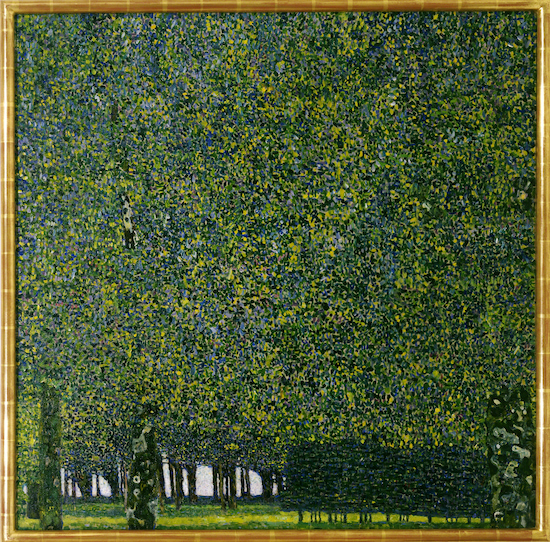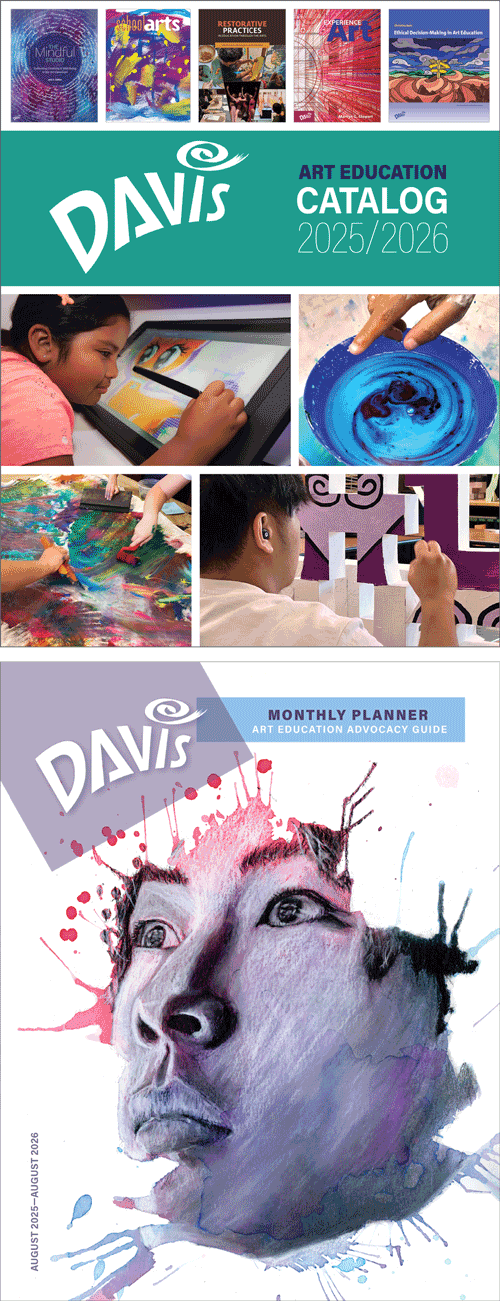Artist Birthday: Gustav Klimt
Gustav Klimt, along with Oskar Kokoschka (1886–1980) was a leading Austrian modernist at the turn of the 1900s. Although noted as a society portrait painter in an Art Nouveau/Byzantine mosaic like style, Klimt explored many different stylistic formulas that set him apart from early 1900s modernists.
Artist Birthday for 14 July: Gustav Klimt (1862–1918, Austria)
Gustav Klimt was an early Austrian modernist whose work is often associated with Art Nouveau
 |
| Gustav Klimt, The Park, 1909. Oil on canvas, 110.4 x 110.4 cm. Image © 2025 The Museum of Modern Art, New York. (MOMA-P2119) |
After 1905, Klimt returned to an emphasis on themes that reveal his abiding connection to Symbolism, infused with the decorative impact of Art Nouveau. Although paintings such as this maintained the flat, decorative, often organic shapes of Art Nouveau, the carefully painted, screen-like forms have a decidedly Symbolist aesthetic. His use of the Post-Impressionist pointillist technique is a continuation of his ongoing interest in Byzantine mosaics.
Klimt never expressed a concern for the science of optical perception of color like Seurat. Without the allusion to grass and tree trunks, this composition would be a totally decorative, abstract work. It is, like his portraits, a combination of abstract pattern with realism. All of Klimt's landscapes were begun outdoors and finished in the studio. Despite being known for his Symbolist/Art Nouveau figurative work, Klimt returned time and time again to landscape subjects. This work is thought to be painted from one of the numerous summers Klimt spent at the country around Lake Atter.
The Arts and Crafts Movement evolved during the late 1800s, a time when many artists still worked in traditional, academically accepted styles using traditional methods. The movement advocated organic design, traditional materials (rather than mass-produced), and hand crafting. Art Nouveau grew out of the Arts and Crafts Movement's dedication to past European styles and Asian art not favored in revival styles of the period.
What united both styles was an interest in synthesizing the fine arts with graphic and industrial design, with a strong emphasis on dynamic line. Organic forms and the willingness to depart from models in order to achieve suggestive, often imaginary forms links the movement to Symbolism. In Austria, the movement was called Secession , because the artists rejected the conservative academy that dominated the arts in Vienna, and the intolerance towards non-traditional, anti-natural styles.
Klimt is often seen as the leading artist of the Secession in Austria. He was born in Vienna, the son of a poor gold engraver and musician mother. Disposed to the arts, Klimt displayed talent for drawing as a young man and at 14 he left the regular high school to study at the Vienna School of Arts and Crafts. There he received a conservative, academic education in art with the intention of painting murals and teaching drawing. Klimt earned commissions already while still in school and in 1883 opened his own studio with his brother.
In Klimt's studio with his brother Ernst (1864-1892), he focused on mural painting that was in a historicist style favored by the Viennese wealthy. Their success was such that in 1890 they were able to join the prestigious Vienna Artists' Association, a conservative, traditional group that controlled all major commissions in Vienna. After the tragic death of his brother however, Klimt began to reject the stifling, unyielding demands on realism in the Association in favor of exploring a more personal, experimental style. In order to gain personal artistic freedom, he quit the Association in 1897 and joined like-minded progressive artists to found the Vienna Secession.
Drawing on a stream of avant-garde European movements at the time such as Aestheticism, Pre-Raphaelitism and Art Nouveau, Klimt developed a distinctive modern style that combined flat, geometric patterns, showers of gold leaf backgrounds, and sensuously modeled figures which have become his most recognized works.
Correlations to Davis programs: Discovering Art History 4E, 2.3; Davis Collections -- Western Art Style: Pointillism

Comments